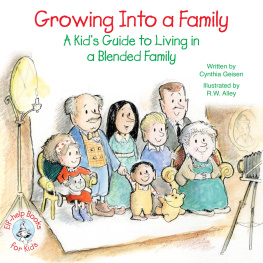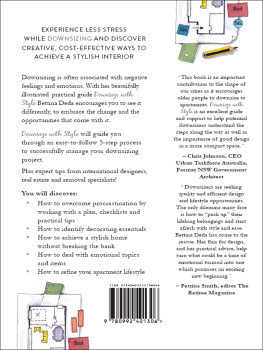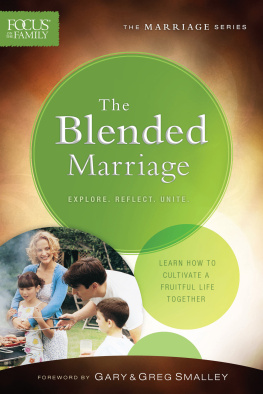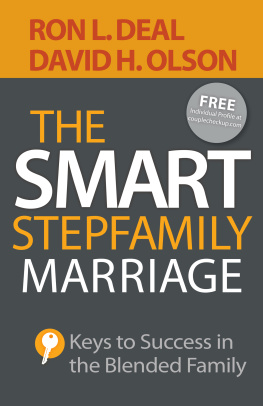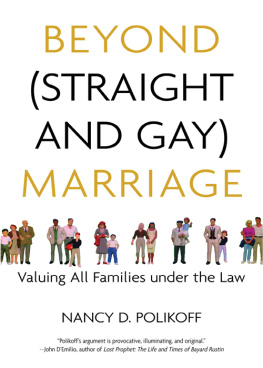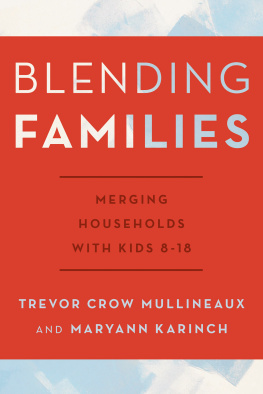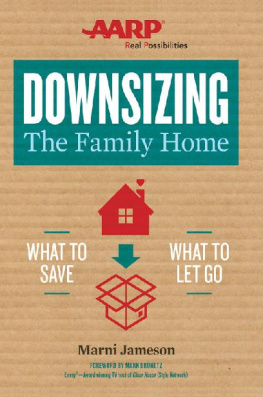STERLING and the distinctive Sterling logo are registered trademarks of Sterling Publishing Co., Inc.
Text 2019 Marni Jameson
Cover 2019 Sterling Publishing Co., Inc.
All rights reserved. No part of this publication may be reproduced, stored in a retrieval system, or transmitted in any form or by any means (including electronic, mechanical, photocopying, recording, or otherwise) without prior written permission from the publisher.
All trademarks are the property of their respective owners, are used for editorial purposes only, and the publisher makes no claim of ownership and shall acquire no right, title, or interest in such trademarks by virtue of this publication.
ISBN 978-1-4549-3474-5
For information about custom editions, special sales, and premium and corporate purchases, please contact Sterling Special Sales at 800-805-5489 or .
sterlingpublishing.com
Cover design by David Ter-Avanesyan
Interior design by Christine Heun
For Adam, Alyssa, Brett, Paige, and Marissa
Introduction
Hearts May Become One, but Houses Collide
Why is it your furniture and my stuff? DC asked.
Stuff, I thought to myself, was actually putting it nicely.
DC and I were in our fifties, and had just gotten engaged and bought a house. We were now negotiating the rocky territory of whose furnishings and housewares would go and whose would stay.
It turns out that his question was just the beginning of many good questions (and a few arguments) that arose as our heartsand our householdsnot so seamlessly became one. Experts later told me that these turf wars shake the core of even the most stable relationships.
As is the case in four out of ten marriages today (according to a 2014 Pew Research Center analysis), DC and I were both remarrying. Among the many differences between getting married or moving in together in your early twenties for the first time and marrying, remarrying, or cohabitating later in life is that you have more stuff. When youre young, you blend your bookcase made of pine planks and cinder block with your sweethearts stained, hand-me-down sofa and beanbag chair, and build from there. More mature unions bring to the merger two dining room sets, two collections of holiday decorations, and two vacuum cleaners.
One look at the statistics showed that DC and I have plenty of company. Marriage and remarriage are thriving in America, and brides and grooms are older on average than ever. Remarriagesand thus the rate at which more established households are mergingare at a historic high. Back in the sixties, most marriages were one-and-done deals. Only one in five marriages ended in divorce. Only 13 percent of those who divorced or who lost a spouse got remarried. Today, the divorce rate hovers around 50 per-cent. In two out of five marriages, at least one partner has been married before. In one out of five marriages, both partners have been married before, as in our case. Older Americans are leading the trend: half of previously married seniors have tied the knot again, according to the 2014 Pew report.
Todays couples are also waiting longer to say I do for the first time. According to a study by the US Census Bureau in 2018, the average age at first marriage in the United States is 27 for women and 29 for men. Thats up from ages 23 and 26, respectively, in 1990, and 20 and 22 in the 1960s. These statistics dont account for all the mature committed couples blending households.
All this means is that today, by the time two established adults walk down the aislewhether for the first, second, or fifth timethey very likely have two complete households in tow: homes full of belongings that reflect who they are and where theyve been, their style, and their history.
They bring to the mix belongings they worked hard for and have become attached to, an often sizable collection of material possessions that entwine with the stories of their lives. Multiply that by two, and you can see why when you merge you must purge. The math goes like this:
1 house + 1 house must = 1 house.
That means each partner must downsize by roughly half. Ouch! That is a lot of letting go. Though the merger math is simple, applying it is not.
And that is why, all across America, as hearts and homes become one, couples are saying what I said to DC: Darlin, I love you. But your stuff, not so much.
MERGER IN MIDLIFE
Like so many couples marrying and remarrying, DC and I werent just starting out. I was a divorced mom forging a new life after my marriage of 24 years ended. DC had lost his wife of 27 years to cancer and had a lot of living left to do. Our combined family of five grown children, then ages 21 to 35, were out of the house. My two were in college, and his three were forging their careers and starting families.
Though battered by the storms of life, we still believed in love, and we both, fortunately, had the nerve to drop a line in the water and try online dating.
DC, whod had a good experience with his marriage, was more optimistic about finding a partner. I was less hopeful and more skittish. I thought the possibility of finding that special someone who would appreciate and understand my many quirks while also meeting my must-have criteria was about as likely as finding a Nordstrom on Mars.
Still, at the prodding of my two daughters, I nervously ventured onto a dating site. Shortly afterward, my profile surfaced as one of his matches, and he sent me a message.
We met on a Sunday afternoon in the spring of 2014 over a glass of wine, a date that lasted four hours. Fourteen magical months later, while standing in the empty kitchen of a four-bedroom Mediterranean-style house in Winter Park, Florida, that wed just signed the papers on, DC proposed.
I thought my feet would never touch the ground again. However, as we discussed blending our respective homes along with our considerable collection of lifelong possessions, my feet not only touched the ground, my heels dug in like a pair of farm plows.
I, for one, was bringing more to the joint venture than a trousseau and a hope chest. DC wasnt traveling light, either. We both had entire households, belongings wed acquired over half a century of living and raising families. We both had many cherished possessions we would need to sort through, vet, part with, and blend in a way that not only looked good, but also felt good, and felt fair.
We were fast discovering that when two houses become one, somethings got to go, and you dont want it to be the relationship. Downsizing two homes to blend into one can either lead to an ugly turf war, where a clash of styles leaves behind a tsunami of hurt feelings, or a harmonious blending that lets each person shed and evolve, and that brings out and blends the best of both.



